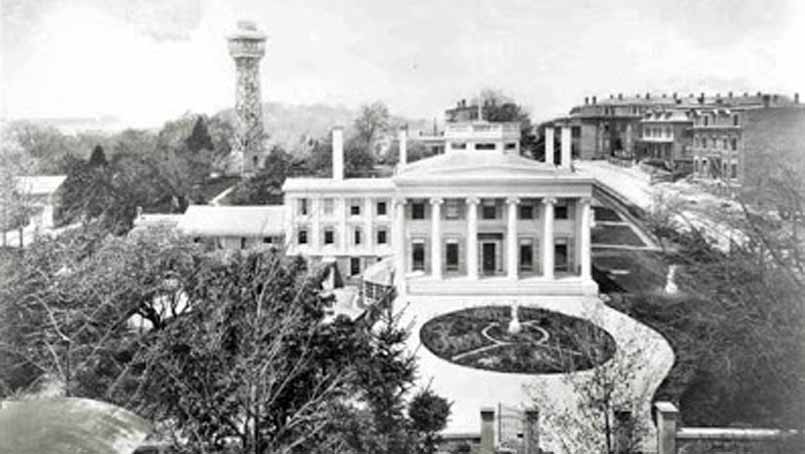
January 19, 2016 Boston Landmarks Commission Names Roxbury’s Kittredge House and Downtown’s Winthrop-Carter Building Boston Landmarks
Historic Boston reported in December that the Boston Landmarks Commission entertained the petition to name the 1834 Alvah Kittredge a Boston Landmark, but we are honored to announce this week that the Commission formally designated the property a Landmark. At the same time, the Commission also landmarked the Winthrop-Carter Building at One Water Street in downtown Boston, a structure built in 1894.
Both of these architecturally and historically important buildings will be afforded a high degree of protection, requiring all property owners in the future to seek approvals for exterior improvements or changes to the structures. By doing so, the architectural integrity of the buildings will be preserved.
HBI has a connection to both buildings: HBI owns the Kittredge House which it rehabilitated in 2014. The Winthrop-Carter Building is located opposite HBI’s Old Corner Bookstore (1718) on Washington Street in Downtown Boston. Winthrop-Carter was built by Timothy Harrington Carter, an investor, bookseller and publisher in Boston, and in the 19th century this area was the center of book and newspaper publishing in Boston. According to the Landmark Study report,
Carter was involved in several business ventures, including the first type and stereotype foundry in New England (a joint venture with his brother, Charles), and the first shop in Boston to purchase the right to use Treadwell’s machine-powered printing presses. The area between the Old State House and School Street was already an established bookseller and newspaper district when Carter secured a six-and-a-half year lease to renovate the 1718 Crease-Brimmer mansion at 277-285 Washington Street, today known as the Old Corner Bookstore. In the newly restored building, he established a retail bookstore with his brother, Richard Carter, and his friend, Charles Hendee. Timothy Harrington Carter himself remained a silent partner in the firm Carter & Hendee, established in April 1829. Seven printing presses were located in the building to print books sold on site. Four were the improved Treadwell type, originally driven by horses and later by steam. In July 1832, Carter & Hendee purchased the bookselling establishment of Richardson, Lord & Holbrook, and decided to focus on publishing books both its own and those newly acquired. Carter, Hendee & Co. continued as publishers until late 1835 or early 1836 when it went bankrupt. Carter & Hendee’s retail bookselling business was sold in July 1832 to Timothy Harrington Carter, John Allen and William Davis Ticknor for $24,000. The new firm, Allen & Ticknor, maintained the retail shop at the Old Corner Bookstore. Carter & Hendee and Allen & Ticknor were followed by a long line of bookseller-publishers housed at the Old Corner Bookstore, including Ticknor & Fields, E. P. Dutton, A. Williams, and Damrell & Upham. Carter remained a silent partner in Allen & Ticknor until his interest in the firm was purchased in March 1834.
The well-known theater architect Clarence Blackhall was the architect for the Winthrop Carter Building. Carter himself died shortly after the Winthrop Carter Building was constructed.
HBI is very excited by both of these designations and congratulates the Landmarks Commission on the protection of these two beautiful Boston buildings and on two excellent study reports, for Kittredge and?and for Winthrop-Carter.



